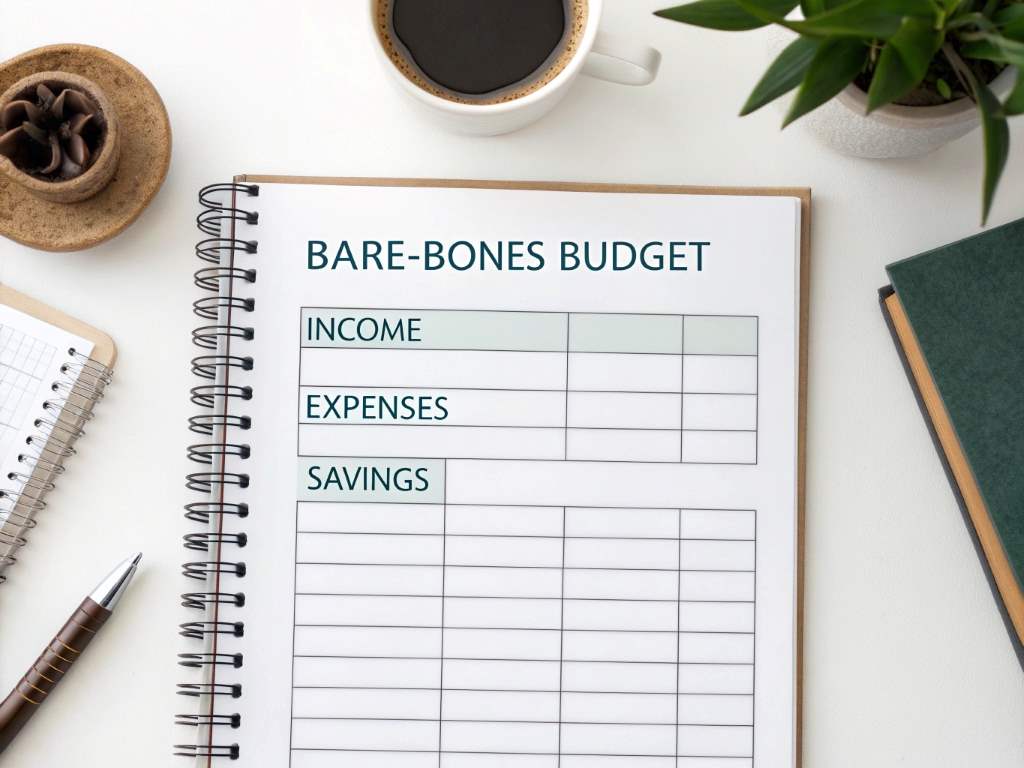An emergency fund acts as a financial safety net for unexpected expenses, such as medical bills or car repairs. For low-income earners, building this fund can feel daunting, but it’s achievable with the right strategies. According to a 2023 Federal Reserve report, 37% of Americans couldn’t cover a $400 emergency without borrowing. This statistic highlights the urgency of saving, especially when money is tight. An emergency fund provides peace of mind and prevents debt spirals.
In my early 20s, I faced a sudden job loss with no savings, forcing me to rely on high-interest credit cards. That experience taught me the value of even a small emergency fund. This guide shares practical, actionable tips to help you save quickly, no matter your income. Let’s dive into how you can start building your fund today.
Set a Realistic Savings Goal
The first step is defining a clear, attainable savings target. For low-income earners, aiming for $500 to $1,000 initially is practical. This amount can cover common emergencies like minor car repairs or medical co-pays. Break the goal into smaller milestones, such as $100 per month, to make it less overwhelming. Track your progress using a simple spreadsheet or app, much like how businesses use Hyper-Local SEO strategies to monitor small, consistent gains in their community outreach. A 2022 study by the Urban Institute found that households with even $250 in savings were less likely to face financial hardship.
Start small but stay consistent. For example, saving $10 weekly adds up to $520 in a year. Adjust your goal based on your income and expenses, but keep it specific. I began with a $300 goal, which felt doable despite my tight budget. Celebrate small wins to stay motivated. Setting a realistic target builds momentum and keeps you focused.
Create a Bare-Bones Budget
A lean budget is key to freeing up money for savings. List all your monthly expenses, including rent, utilities, groceries, and transportation. Then, identify areas to cut back. For instance, reducing dining out or canceling unused subscriptions can save $20–$50 monthly. Use the 50/30/20 rule as a guide: 50% for necessities, 30% for wants, and 20% for savings or debt repayment.
However, on a low income, you may need to tweak this to 70/20/10. Apps like Mint or YNAB can help track spending. In my case, I slashed cable and cooked at home, saving $30 monthly for my fund. Be ruthless but realistic—don’t cut essentials like rent or healthcare. Review your budget monthly to find new savings opportunities. A bare-bones budget isn’t about deprivation; it’s about prioritizing your financial security. Every dollar saved gets you closer to your goal.
Automate Your Savings
Automation makes saving effortless. Set up a separate savings account and schedule automatic transfers, even if it’s just $5 weekly. Many banks, like Ally or Chime, offer high-yield savings accounts with no fees, ideal for low-income savers. According to a 2024 Bankrate survey, 56% of savers who automated their contributions saved more consistently. Treat transfers like a bill to avoid skipping them, much like committing to consistent steps in your digital marketing journey to achieve steady growth.
I automated $10 biweekly transfers, and within six months, I had $240 without noticing the difference. If your employer offers direct deposit, split your paycheck to send a portion to savings. Timing matters—schedule transfers right after payday to avoid spending the money. If automation isn’t an option, manually transfer funds on a set date. The key is consistency. Automating removes temptation and builds your fund steadily, no matter how small the amount.
Boost Your Income with Side Hustles
Increasing your income accelerates savings. Side hustles are perfect for low-income earners with limited time. Options include freelancing, pet sitting, or selling unused items online. For example, driving for Uber or tutoring can earn $100–$200 monthly. A 2023 Upwork study found that 36% of Americans freelanced to supplement income.
Dedicate side hustle earnings directly to your emergency fund. I sold old clothes on Poshmark, earning $150 in two months, all of which went to savings. Choose hustles that fit your skills and schedule—babysitting might work for parents, while gig apps suit night owls. Be cautious of scams; stick to reputable platforms like TaskRabbit or Etsy. Even an extra $50 monthly adds $600 yearly to your fund. Side hustles aren’t forever, but they’re a powerful tool to jumpstart your savings.
Cut Non-Essential Spending
Trimming unnecessary expenses frees up cash for your fund. Start by reviewing subscriptions—cancel streaming services or gym memberships you rarely use. Next, reduce impulse buys, like coffee runs or online shopping. For instance, brewing coffee at home can save $20 monthly. A 2024 NerdWallet study showed that Americans spend $200 monthly on non-essentials, money that could grow an emergency fund.
Bring lunch to work instead of eating out, saving $50 or more monthly. I stopped buying takeout twice weekly, redirecting $40 monthly to savings. Shop smarter by using grocery store sales or buying in bulk for staples like rice or pasta. Negotiate bills, like internet or phone, for lower rates. These small changes add up. Cutting non-essentials doesn’t mean sacrificing joy—find free alternatives, like library books or park walks, to stay fulfilled while saving.
Use Windfalls Wisely
Windfalls, like tax refunds or birthday cash, are golden opportunities to boost your fund. Instead of splurging, allocate at least 50% to savings. For example, a $600 tax refund could instantly meet a $300 goal. The IRS reported in 2023 that the average refund was $2,753—imagine the impact of saving half. I received a $200 gift and put $150 toward my fund, reaching my goal faster.
Other windfalls include work bonuses, rebates, or cash from selling furniture. Resist the urge to spend it all. If tempted, transfer the money to savings immediately. For smaller windfalls, like $20 from a side gig, save the full amount. Combining windfalls with regular savings creates a powerful effect. Treat these funds as a shortcut to security, not a chance to splurge. Every windfall saved is a step toward stability.
Build a No-Spend Challenge
A no-spend challenge eliminates discretionary spending for a set period, like a week or month. Focus on essentials—rent, groceries, utilities—and avoid extras like dining out or entertainment. Use what you already have, like pantry staples or streaming subscriptions. A 2022 Money Crashers survey found that 62% of challenge participants saved over $100 monthly.
Plan meals to avoid last-minute takeout, and find free activities, like hiking or game nights. I tried a two-week challenge, saving $80 by cooking at home and skipping coffee shops. Track your savings daily to stay motivated. Be flexible—if an emergency arises, adjust the rules. Share your challenge with friends for accountability. The money saved goes straight to your fund, accelerating progress. No-spend challenges teach discipline and prove you can live with less while building financial security.
Conclusion
Building an emergency fund on a low income is challenging but entirely possible. Start with a clear goal, create a lean budget, and automate savings. Boost income with side hustles, cut non-essentials, and use windfalls wisely. A no-spend challenge can add momentum. My journey from zero savings to a $1,000 fund took discipline, but it brought peace of mind. You don’t need a high income—just consistent, intentional steps. Begin today, even with $5. Over time, your fund will grow, protecting you from life’s surprises.
FAQs
How much should my emergency fund be?
Aim for $500–$1,000 initially, enough to cover small emergencies like car repairs.
Can I build an emergency fund while paying debt?
Yes, save a small amount, like $200, then focus on high-interest debt repayment.
What’s the fastest way to start saving?
Automate $5–$10 weekly transfers to a savings account right after payday.
Should I keep my fund in a checking account?
No, use a separate high-yield savings account to earn interest and avoid spending.
How do I stay motivated to save?
Track progress, celebrate milestones, and visualize the security your fund provides.




